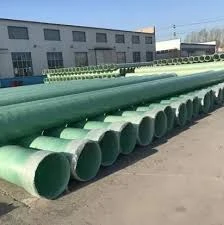
-
 Afrikaans
Afrikaans -
 Albanian
Albanian -
 Amharic
Amharic -
 Arabic
Arabic -
 Armenian
Armenian -
 Azerbaijani
Azerbaijani -
 Basque
Basque -
 Belarusian
Belarusian -
 Bengali
Bengali -
 Bosnian
Bosnian -
 Bulgarian
Bulgarian -
 Catalan
Catalan -
 Cebuano
Cebuano -
 China
China -
 China (Taiwan)
China (Taiwan) -
 Corsican
Corsican -
 Croatian
Croatian -
 Czech
Czech -
 Danish
Danish -
 Dutch
Dutch -
 English
English -
 Esperanto
Esperanto -
 Estonian
Estonian -
 Finnish
Finnish -
 French
French -
 Frisian
Frisian -
 Galician
Galician -
 Georgian
Georgian -
 German
German -
 Greek
Greek -
 Gujarati
Gujarati -
 Haitian Creole
Haitian Creole -
 hausa
hausa -
 hawaiian
hawaiian -
 Hebrew
Hebrew -
 Hindi
Hindi -
 Miao
Miao -
 Hungarian
Hungarian -
 Icelandic
Icelandic -
 igbo
igbo -
 Indonesian
Indonesian -
 irish
irish -
 Italian
Italian -
 Japanese
Japanese -
 Javanese
Javanese -
 Kannada
Kannada -
 kazakh
kazakh -
 Khmer
Khmer -
 Rwandese
Rwandese -
 Korean
Korean -
 Kurdish
Kurdish -
 Kyrgyz
Kyrgyz -
 Lao
Lao -
 Latin
Latin -
 Latvian
Latvian -
 Lithuanian
Lithuanian -
 Luxembourgish
Luxembourgish -
 Macedonian
Macedonian -
 Malgashi
Malgashi -
 Malay
Malay -
 Malayalam
Malayalam -
 Maltese
Maltese -
 Maori
Maori -
 Marathi
Marathi -
 Mongolian
Mongolian -
 Myanmar
Myanmar -
 Nepali
Nepali -
 Norwegian
Norwegian -
 Norwegian
Norwegian -
 Occitan
Occitan -
 Pashto
Pashto -
 Persian
Persian -
 Polish
Polish -
 Portuguese
Portuguese -
 Punjabi
Punjabi -
 Romanian
Romanian -
 Russian
Russian -
 Samoan
Samoan -
 Scottish Gaelic
Scottish Gaelic -
 Serbian
Serbian -
 Sesotho
Sesotho -
 Shona
Shona -
 Sindhi
Sindhi -
 Sinhala
Sinhala -
 Slovak
Slovak -
 Slovenian
Slovenian -
 Somali
Somali -
 Spanish
Spanish -
 Sundanese
Sundanese -
 Swahili
Swahili -
 Swedish
Swedish -
 Tagalog
Tagalog -
 Tajik
Tajik -
 Tamil
Tamil -
 Tatar
Tatar -
 Telugu
Telugu -
 Thai
Thai -
 Turkish
Turkish -
 Turkmen
Turkmen -
 Ukrainian
Ukrainian -
 Urdu
Urdu -
 Uighur
Uighur -
 Uzbek
Uzbek -
 Vietnamese
Vietnamese -
 Welsh
Welsh -
 Bantu
Bantu -
 Yiddish
Yiddish -
 Yoruba
Yoruba -
 Zulu
Zulu
Exploring the Benefits of FRP Materials in Automobile Body Manufacturing and Design
The Evolution and Significance of FRP Car Bodies
In the automotive industry, innovation is the key to meeting consumer demands for safety, performance, and efficiency. One of the latest advancements that has gained substantial traction is the use of Fiber Reinforced Polymer (FRP) in car body construction. This modern composite material offers a multitude of benefits that make it an attractive choice for manufacturers aiming to enhance their vehicles while adhering to stricter environmental regulations and performance standards.
What is FRP?
Fiber Reinforced Polymer (FRP) is a composite material made up of a polymer matrix reinforced with fibers. These fibers can be made from various materials, including glass, carbon, or aramid, each offering specific benefits in terms of weight, strength, and durability. The matrix is usually a plastic resin that helps bind the fibers together, providing structural integrity to the final product. FRP can be molded into complex shapes, making it an ideal choice for car bodies that require both aesthetic appeal and functional design.
Advantages of FRP Car Bodies
1. Lightweight One of the most significant advantages of FRP is its low weight compared to traditional metal materials like steel or aluminum. Lighter vehicles require less energy to propel, resulting in improved fuel efficiency and reduced emissions. This is particularly crucial in an era where automotive manufacturers are under pressure to produce eco-friendly vehicles.
The Evolution and Significance of FRP Car Bodies
3. Design Flexibility The molding capabilities of FRP allow for greater design flexibility than traditional materials. Manufacturers can create intricate shapes and textures that can improve aerodynamics and aesthetics. The freedom in design can lead to innovative vehicle styles that stand out in a competitive market.
frp car body

4. High Strength-to-Weight Ratio FRP boasts an impressive strength-to-weight ratio, meaning it can withstand significant forces without adding substantial weight to the vehicle. This is particularly beneficial for sports cars and performance vehicles that require a strong yet lightweight body for optimal speed and handling.
5. Environmental Impact As sustainability becomes a crucial focus in the automotive sector, FRP presents a more environmentally friendly option compared to conventional materials. The potential for recycling certain types of FRP composites contributes to a circular economy model in automotive manufacturing.
Challenges and Future Prospects
Despite its numerous advantages, the adoption of FRP in car body construction is not without challenges. The manufacturing processes for FRP can be more complex and time-consuming compared to traditional methods. Additionally, concerns over recyclability and the environmental impact of some resins used in FRP must be addressed to ensure a truly sustainable lifecycle.
As technology advances and new manufacturing techniques develop, such as automated fiber placement and 3D printing, the future of FRP in the automotive industry looks promising. Increasing collaboration between automotive manufacturers and composite specialists will likely pave the way for innovative solutions that address current limitations.
Conclusion
The integration of Fiber Reinforced Polymer into car body manufacturing marks a significant breakthrough in the quest for lighter, stronger, and more sustainable vehicles. As the automotive industry continues to evolve, the advantages of FRP present an exciting opportunity for manufacturers to meet both consumer expectations and environmental regulations. With ongoing advancements in technology and a growing emphasis on sustainability, FRP car bodies are poised to play a vital role in the future of automotive design and production.
Latest news
-
Oblate Tanks: Space-Saving, Durable Liquid Storage SolutionsNewsAug.27,2025
-
High-Performance Piping System Solutions for Industry & Commercial UseNewsAug.26,2025
-
Precision Fittings: Durable & Reliable Industrial & Plumbing SolutionsNewsAug.25,2025
-
Practical Steps: Unlock Success with Our Proven GuidesNewsAug.24,2025
-
Transport Tanks: Safe, Durable & Efficient Liquid HaulingNewsAug.23,2025
-
High-Quality Piping Systems for Efficient Flow & DurabilityNewsAug.22,2025









